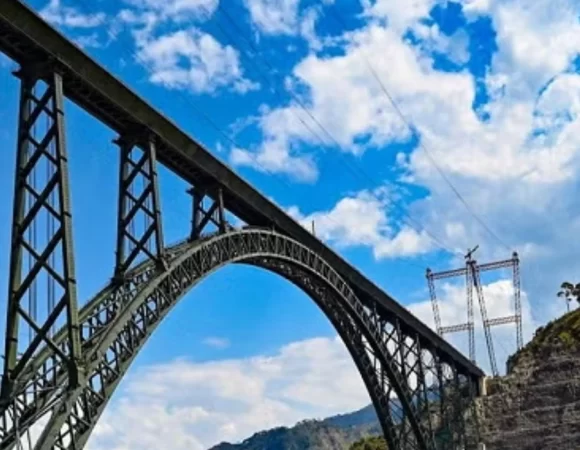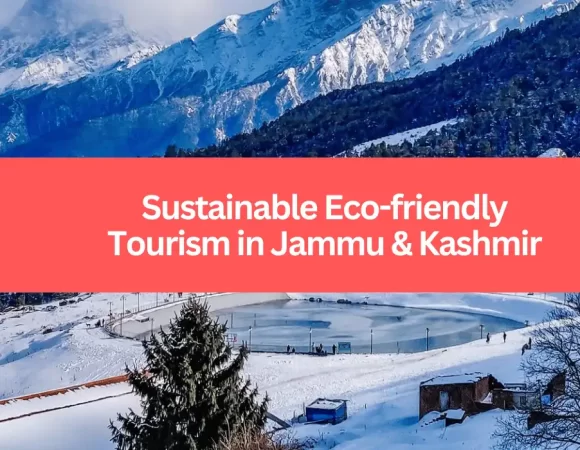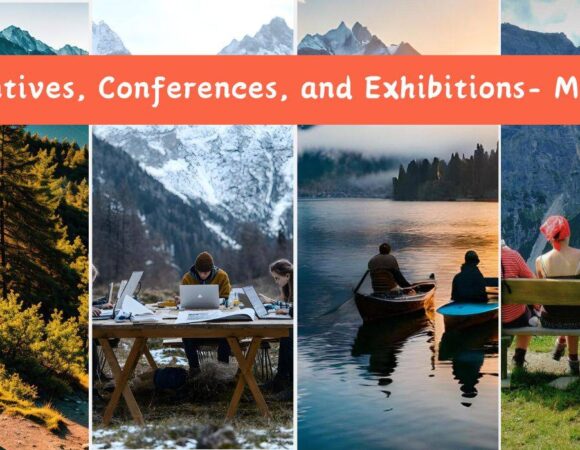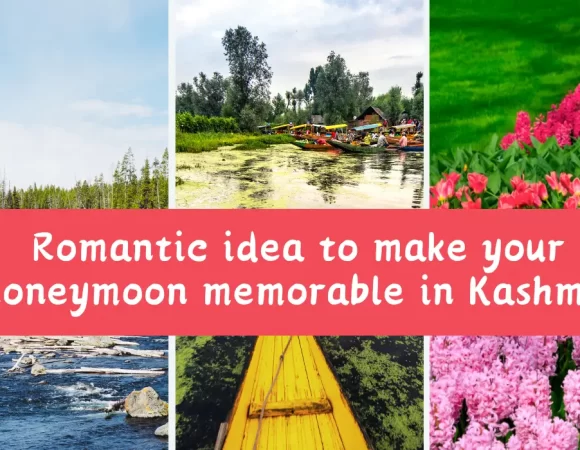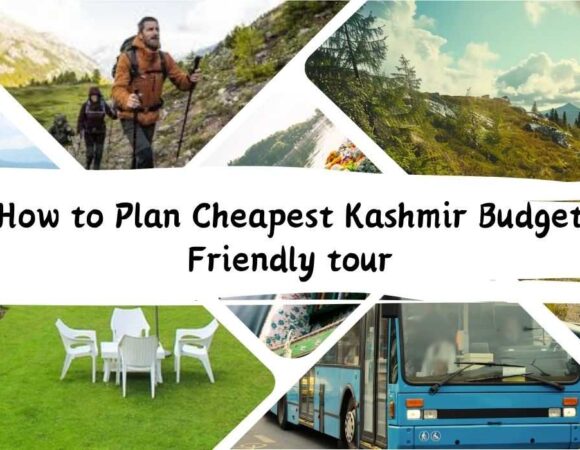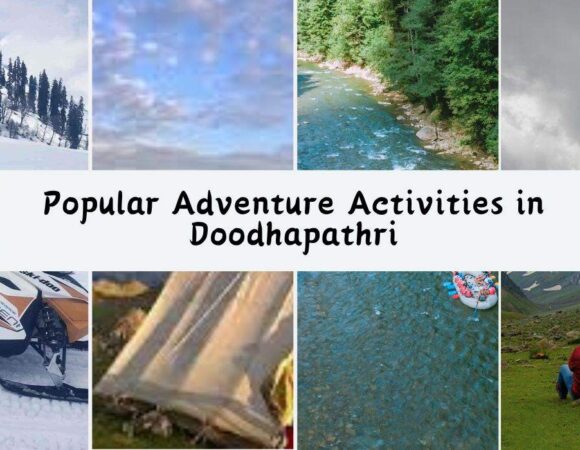
How the Chenab Bridge Is Set to Redefine Tourism in Jammu & Kashmir
Bridging Nature and Opportunity
Towering gracefully over the roaring waters of the Chenab River, the Chenab Railway Bridge is more than a marvel of engineering—it is a bridge to the future of tourism in Jammu & Kashmir. For decades, travelers have dreamed of seamless access to the untouched beauty of Kashmir’s valleys and mountains. Now, that dream is turning into reality.
As part of the Udhampur–Srinagar–Baramulla Rail Link (USBRL), the Chenab Bridge not only connects regions but also unlocks a new chapter in sustainable and scenic tourism. Its sheer scale—the world’s highest railway bridge—already places it on the bucket list of architecture lovers and adventure seekers alike. But its real magic lies in the opportunities it presents: opening up lesser-known regions, reducing travel time, and stimulating economic and cultural revival through tourism.
This blog explores how this iconic bridge is more than just steel and concrete—it’s a symbol of connection, growth, and a brand-new travel experience waiting to unfold.
Discover the beauty of Kashmir with our eco-friendly tour packages. Book your unforgettable trip today

Explore Responsibly, Protect Kashmir’s Environment.
Chenab Bridge – India’s Engineering Masterpiece in the Sky
Key Specifications and Records Broken
The Chenab Railway Bridge is an unparalleled feat of civil engineering. Stretching 1,315 meters in length and soaring 359 meters above the Chenab River, it holds the distinction of being the world’s highest railway bridge—surpassing even the iconic Eiffel Tower in height. Designed to withstand earthquakes, strong winds, and the harsh terrain of the Himalayas, the bridge is built to last for over 120 years.
Constructed using over 28,000 metric tonnes of steel, the bridge is an integral part of the Udhampur–Srinagar–Baramulla Rail Link (USBRL), aimed at connecting the Kashmir Valley with the rest of India. With its large steel arch, cable cranes, and blast-proof structure, the bridge is as much a safety marvel as it is an aesthetic wonder.
Its structural resilience and record-breaking height have already made it a subject of global recognition, attracting the curiosity of travelers, photographers, and civil engineers worldwide.
Timeline and Construction Journey
The vision for the Chenab Bridge was laid out in the early 2000s, but terrain difficulties, seismic risks, and security considerations delayed progress. It wasn’t until 2008 that the foundation works gained serious momentum, and after years of geo-technical studies, tunneling, and climate-adapted design, the arch of the bridge was completed in 2021.
The final golden joint was installed in August 2022, connecting both ends of the bridge across the Chenab. By 2023, trains had started test runs, and the bridge officially opened for full rail connectivity in early 2024.
More than a piece of infrastructure, the Chenab Bridge now stands as a symbol of national unity, perseverance, and strategic development—especially for a region as sensitive and significant as Jammu & Kashmir.
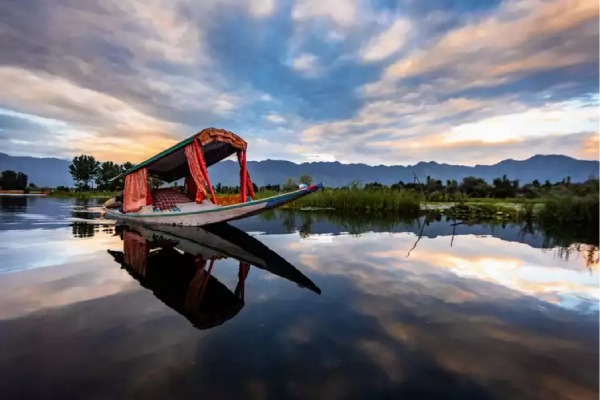
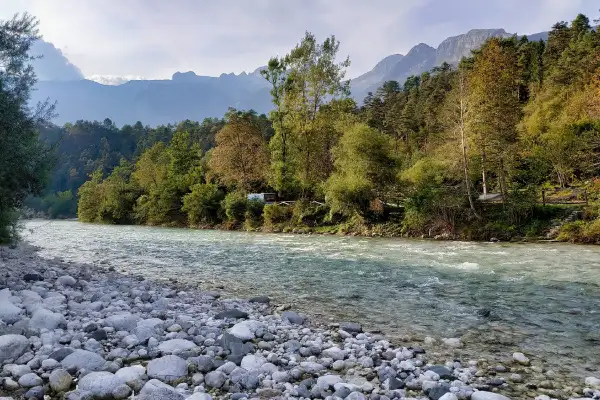
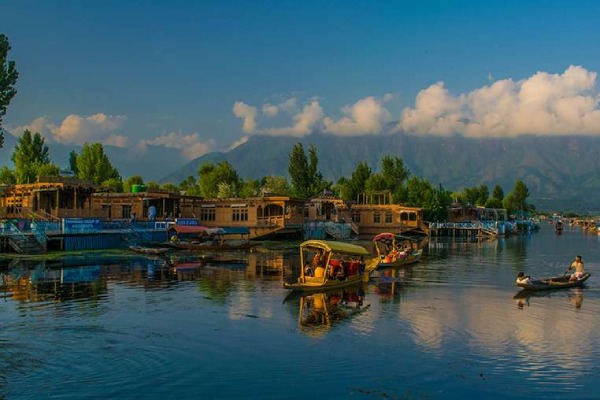
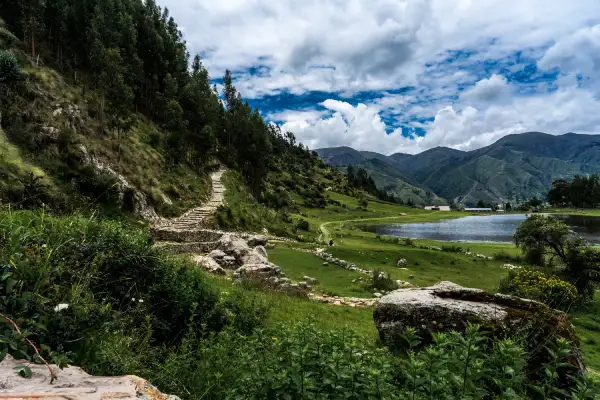


“Travel Green, Preserve Kashmir’s Beauty”
Changing the Face of Tourism in Jammu & Kashmir
Enhanced Rail Access to Virgin Destinations
The opening of the Chenab Bridge is a turning point for tourism infrastructure in Jammu & Kashmir. For decades, the region’s untapped beauty remained out of reach for many due to limited road access and seasonal disruptions. Now, with rail connectivity extending across rugged valleys and high-altitude zones, remote destinations are finally within easy reach.
Towns like Reasi, Banihal, and Anantnag—once overlooked due to poor access—are now poised to welcome tourists via scenic, safe, and comfortable train journeys. The bridge connects these places directly to Katra (Vaishno Devi) and Udhampur, significantly reducing travel time and improving year-round access.
This accessibility is expected to:
- Open up new eco-tourism circuits along the Chenab River and Pir Panjal range
- Facilitate pilgrimage tourism by easing travel to holy sites
- Boost rail-based tourism with special trains, panoramic coaches, and guided rides through the Himalayas
Potential for Multi-Destination Tourism
With rail connectivity stitched through breathtaking mountain passes and river valleys, travelers can now craft multi-destination itineraries that combine nature, spirituality, and culture. Tour operators are already curating packages that include:
- Scenic rail journeys from Udhampur to Baramulla
- Visits to Vaishno Devi, followed by offbeat destinations like Reasi caves and Sanasar meadows
- Homestay-based rural tourism experiences in lesser-known hamlets
This multi-stop travel format will encourage longer stays, greater local spending, and a more immersive exploration of Kashmir’s diverse beauty—all made possible by the bridge that connects them.




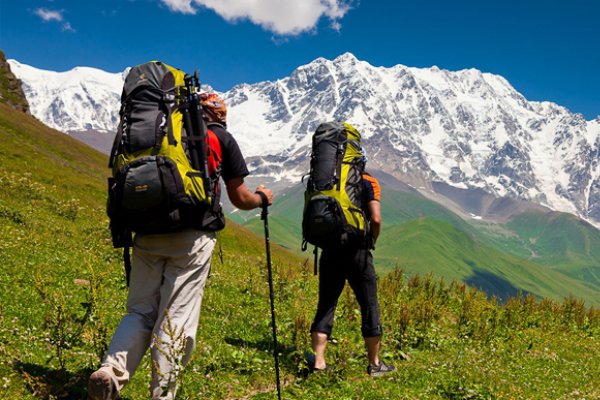
Adventure and Scenic Tourism: A Visual Treat
The rugged topography around the Chenab Bridge is also unlocking new potential for adventure tourism. Once hard-to-reach locations are now being promoted for:
- Trekking and hiking along routes in Reasi and Bhaderwah
- River rafting in calmer stretches of the Chenab
- Paragliding and ziplining in areas like Patnitop and Sanasar
- Camping and glamping near mountain villages connected by train
These offerings appeal to a new demographic of young, experience-seeking tourists who value authenticity and adventure over luxury.
Thanks to the Chenab Bridge, even these remote locations are now part of accessible tourism circuits—making Jammu & Kashmir not just a beautiful destination, but an experiential one.
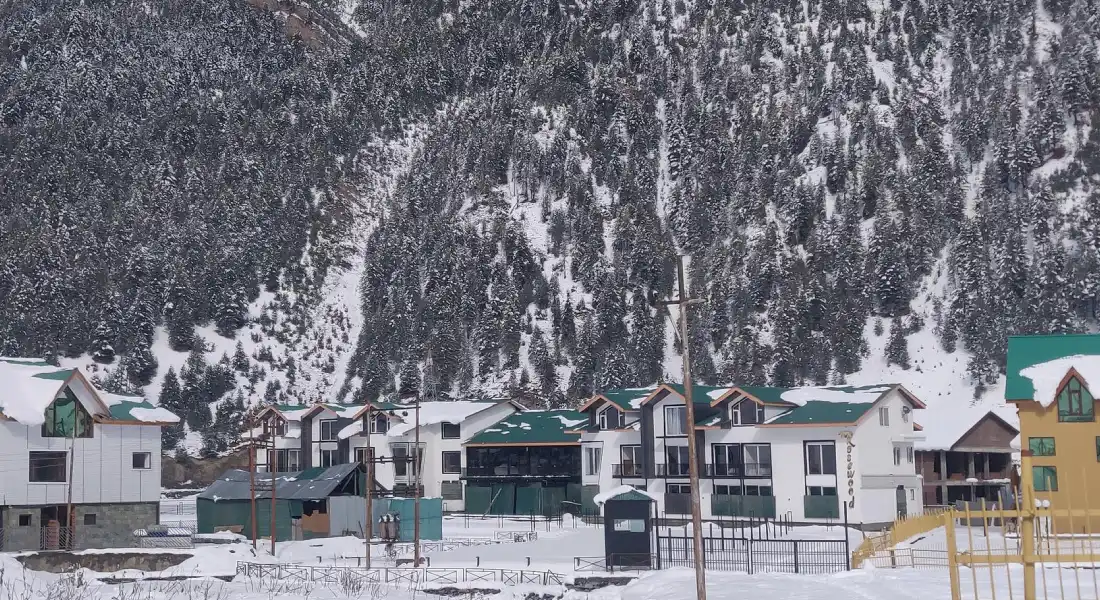
Challenges and Sustainability Concerns
Managing the Impact of Increased Footfall
While the Chenab Bridge opens doors to economic growth and tourism, it also brings forth the challenge of sustainability in ecologically sensitive zones. Jammu & Kashmir’s fragile mountain ecosystems are vulnerable to over-tourism, unchecked construction, and waste mismanagement.
Key concerns include:
- Overcrowding in remote areas without proper infrastructure
- Pressure on local water and waste systems in villages now open to tourism
- Disturbance to wildlife due to noise, pollution, and increased human presence
Without thoughtful planning, the same bridge that brings prosperity could also strain the natural and cultural balance of these regions.
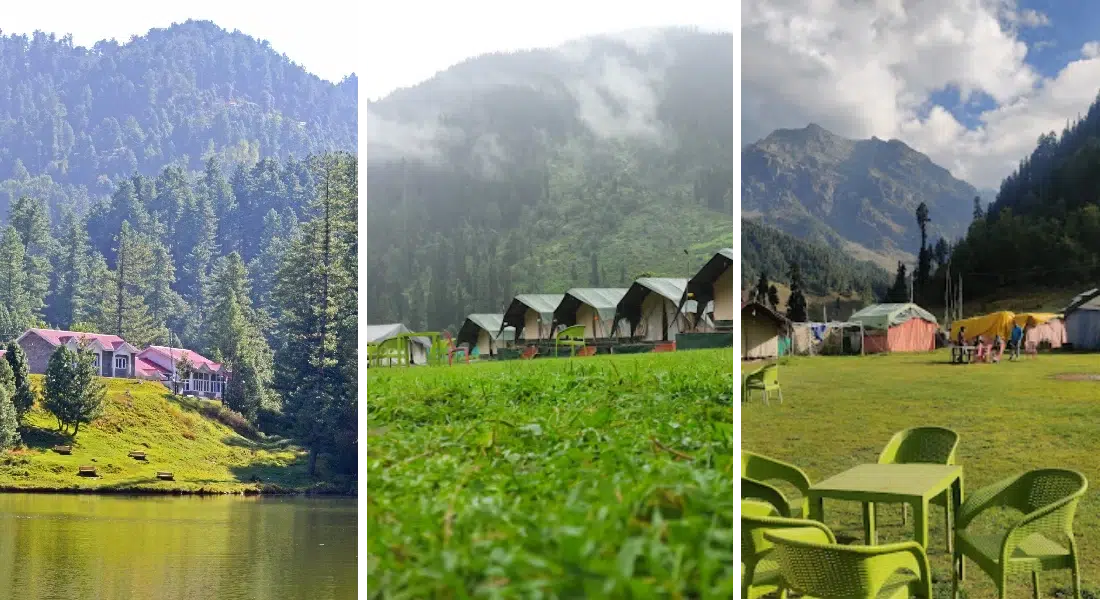
Steps Toward Eco-Friendly Tourism
The good news is that both the government and local stakeholders are aware of these risks. Several eco-tourism initiatives and safeguards are being introduced:
- Sustainable homestay programs with waste segregation and solar energy use
- Eco-certification for tour operators in the Chenab corridor
- Promotion of off-season travel to distribute tourist footfall
- Railway guidelines for zero-litter scenic routes
Efforts are also underway to educate tourists about responsible travel practices—such as using reusable water bottles, respecting local customs, and avoiding plastic.
By balancing access with conservation, the region can ensure that the Chenab Bridge becomes a symbol of sustainable development rather than unchecked growth.
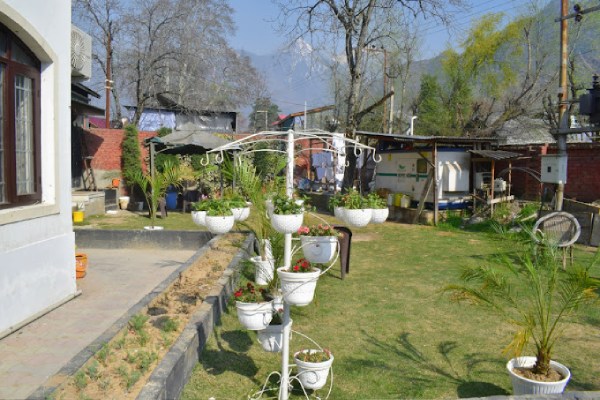
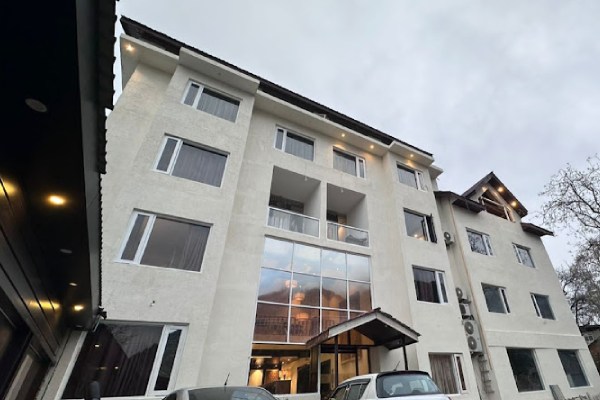


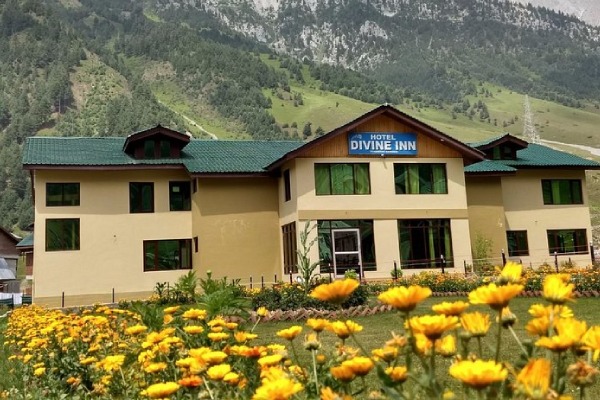
Expert Opinions and Industry Forecasts
Voices from the Industry
Tourism and infrastructure experts across India are united in their belief that the Chenab Bridge will reshape the travel landscape of Jammu & Kashmir. According to a joint report by FICCI and the Ministry of Tourism, the improved rail access is projected to increase tourist arrivals by 35–40% in connected regions within the next three years.
Anil Kumar, Senior Advisor, Indian Railways, notes:
“The Chenab Bridge is more than an engineering marvel. It’s a new chapter in inclusive tourism—bringing in people, prosperity, and pride to Jammu & Kashmir.”
Meanwhile, tour operators are already seeing a spike in demand for scenic rail journeys, and online travel agencies have started curating new itineraries that include Reasi, Katra, and offbeat stops made accessible by the USBRL corridor.
What the Future Looks Like
- The bridge will likely inspire similar tourism-linked infrastructure projects in other parts of North India and the Northeast.
- The “rail + heritage” travel model is expected to grow, with curated experiences offered through IRCTC and private travel platforms.
- Local entrepreneurship—especially among youth and women—will be the cornerstone of economic upliftment in the region.
With the right policies and continued investment in hospitality, the Chenab Bridge could become not just a tourism gateway, but a national model for integrating infrastructure with inclusive development.
Traveler Tips – Experiencing Chenab by Train
For those planning to experience the Chenab Bridge firsthand, the journey is as important as the destination. With scenic routes, well-connected stops, and photo-worthy moments, this rail experience is quickly becoming one of India’s most talked-about travel routes.
Best Time to Visit
- March to May and September to November offer the clearest skies and most pleasant weather for photography and sightseeing.
- Monsoon months (July–August) bring lush greenery but might include delays or fog.
- Winter brings snow-capped peaks in the background—perfect for dramatic landscapes, but dress warmly.
Train Routes and Access
- The bridge is part of the Udhampur–Srinagar–Baramulla Rail Link (USBRL).
- Board trains from Jammu or Katra heading toward Banihal, Anantnag, or Baramulla.
- Special tourist coaches with panoramic windows are expected soon.
What to Pack
- Camera or smartphone with extra memory
- Light jacket, water bottle, snacks
- Power bank and binoculars for scenic viewing
Pro Tip
Sit on the left side of the train (toward Baramulla) for the best views of the Chenab Bridge as you cross. It’s a short moment—but one you’ll never forget.
Whether you’re a rail enthusiast, nature lover, or culture explorer, the Chenab corridor promises a ride that is both unforgettable and photographable.
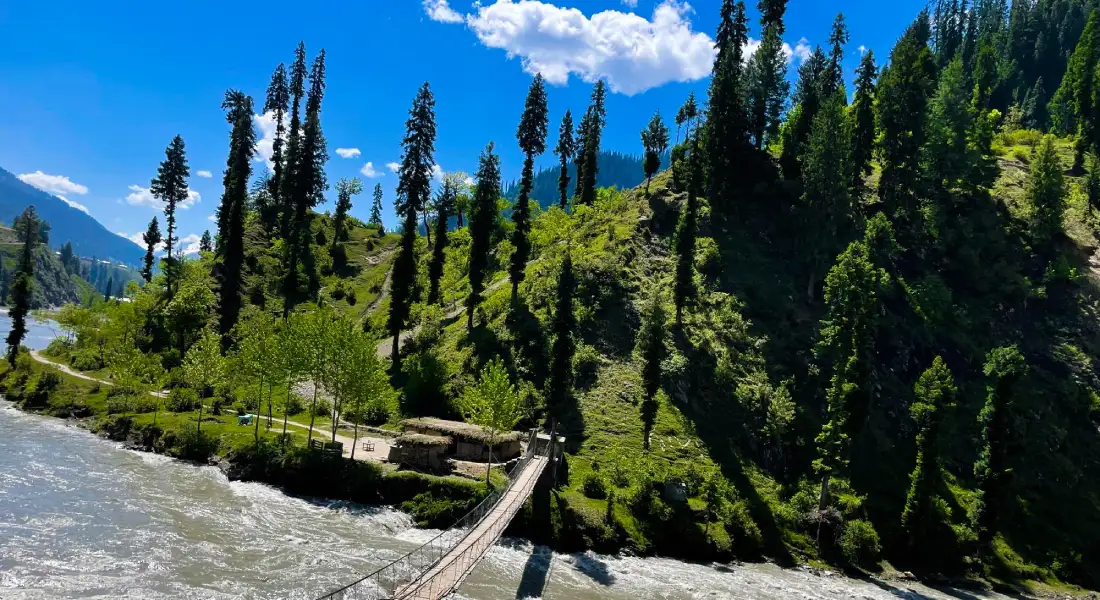
More Than a Bridge
The Chenab Bridge is far more than a railway structure—it’s a symbol of connection, possibility, and progress for Jammu & Kashmir. From dramatically altering the region’s accessibility to unlocking new avenues for sustainable tourism, it’s laying the foundation for a vibrant, inclusive, and future-ready travel ecosystem.
This bridge doesn’t just link two cliffs—it links remote communities to economic opportunity, curious travelers to unexplored destinations, and India’s past dreams to its present achievements. With scenic train journeys, flourishing homestays, and a surge in local entrepreneurship, tourism here is being redefined in a way that uplifts everyone involved.
So, whether you’re planning your next rail adventure or simply looking to discover a side of Kashmir you’ve never seen—this is your moment.
Hop aboard, cross the Chenab, and experience a journey that’s as breathtaking as the destination itself.
Start planning your Kashmir rail trip now. The bridge is open—and so is a world of possibility.
Kashmir’s stunning landscapes and rich biodiversity depend on sustainable tourism practices. By being mindful of your actions and supporting conservation efforts, you can help ensure that the beauty of Kashmir is preserved for generations to come.



